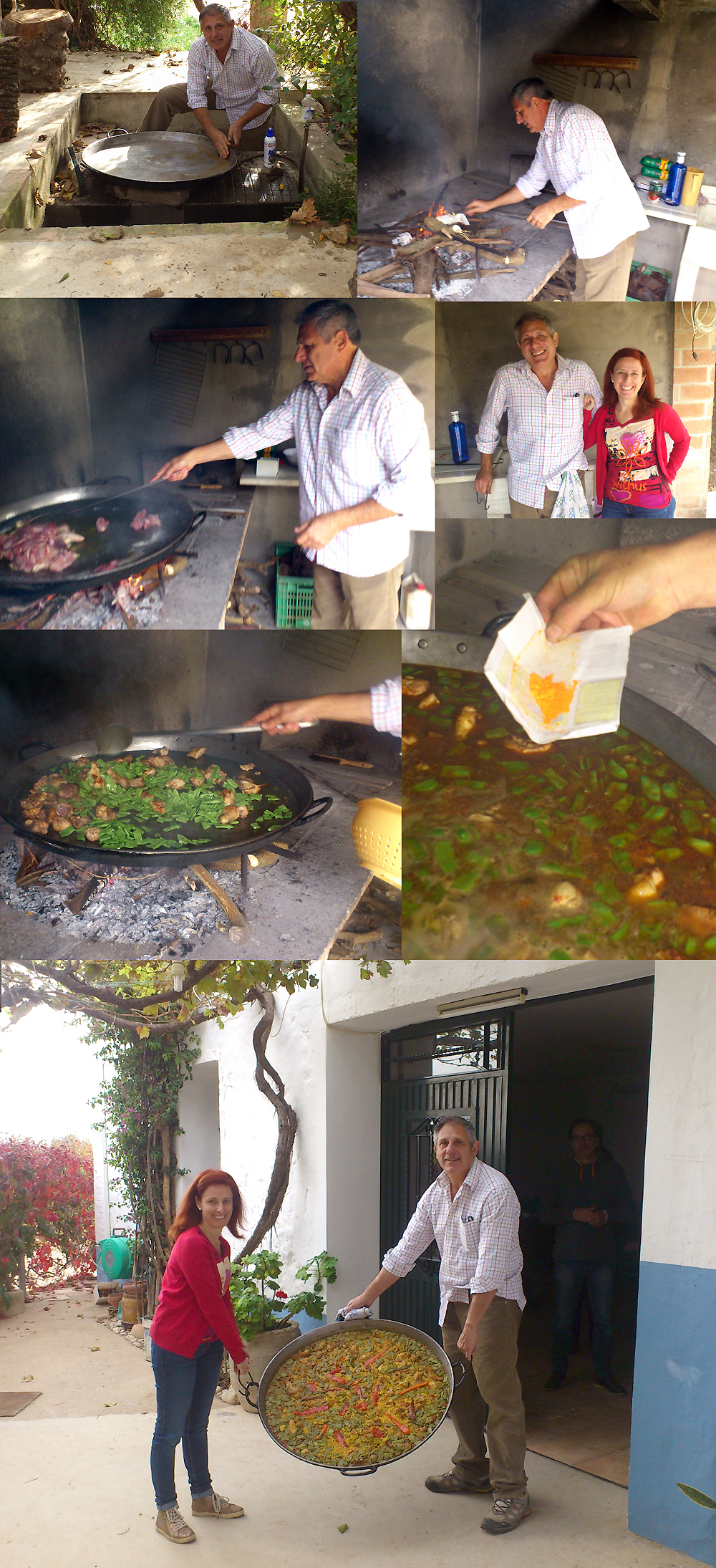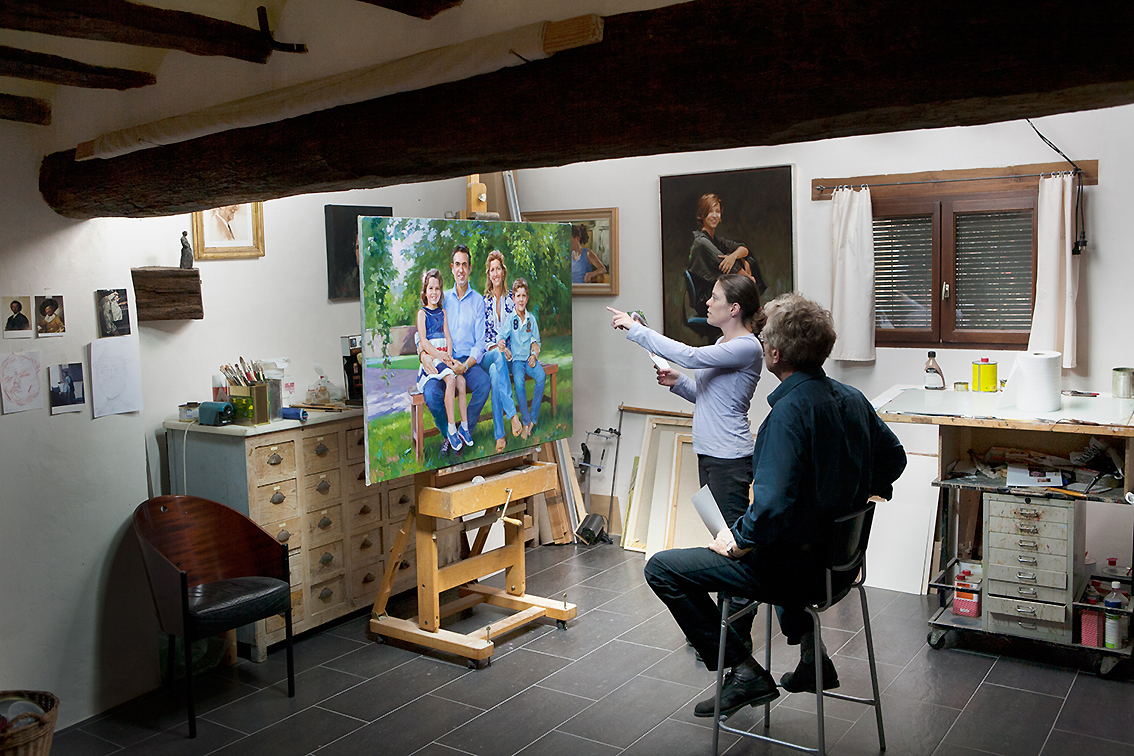It’s been 25 years since we arrived in Valencia. We came for one year but never left. Since then I could work exclusively with portrait painting. One of the first contacts we had in Valencia was the German Consul. I remember he said: “Ben, if you want to integrate well here, you should know whether to talk on Monday morning about football or paella“. I think we are very well integrated, but whether it was due to the advice of the consul I do not know. I do love football and paella though. I myself think that making friends is one of the most important things that you need to do to feel at home in a country. And we have made countless friendships in the recent decades. One of our many friends is Maria. She is a pianist and teaches at the conservatory. Last year I made a short video when she played Camille Saint-Saëns with her friend Carla.
This weekend we were guests of her parents. Vicente, Maria´s father, is a specialist in making paella in the traditional Valencian way. Below is a photo report, and a link to the recipe of traditional Valencian paella.





